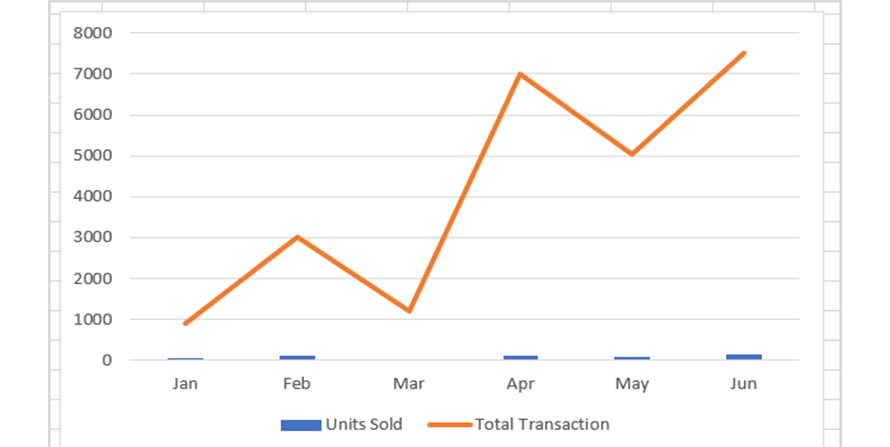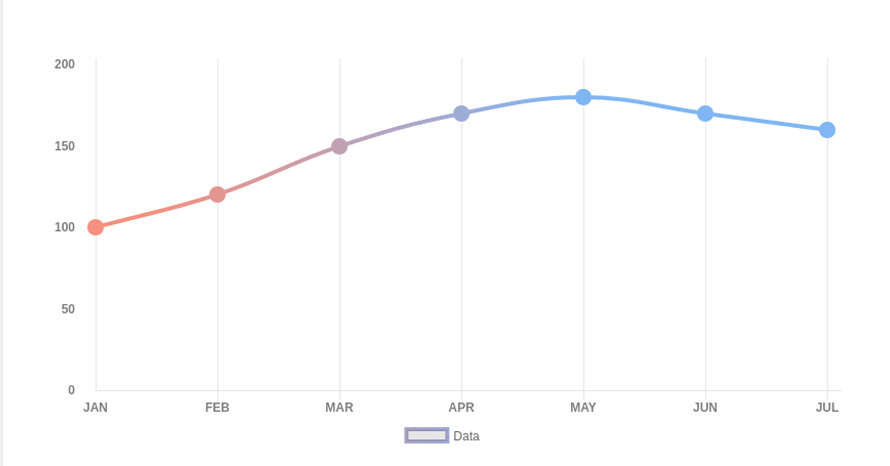History of Line Chart
Some of the earliest known line charts are generally credited to Francis Hauksbee, Nicolaus Samuel Cruquius, Johann Heinrich Lambert and William Playfair. Economist William Playfair, the author of “The Commercial and Political Atlas” (1786), used 43 line chart variants to explore time-series data about political and economic matters. Another use of a line chart appears shortly before Playfair in 1767, when a Swiss mathematician, physicist, philosopher, and astronomer Johann Heinrich Lambert used it regularly to illustrate his discoveries in physics.

When to Use a Line Chart?
When you need to make decisions by analyzing chronological trends
Use a line chart to visualize a trend in data over intervals of time – a time series – to get a picture of how your data changes over a continuous period of time. The line graph is hence often drawn chronologically, to discover the trend with time and adjust strategies according to the trend. The slopes between the markers can allow you to judge whether the trend is about to decrease or increase. The slope of the line segments if of interest, can be found out by generating mathematical formulas for individual segments.

When you need to clearly display relationships with your continuous periodical data
Use line graphs when you need to understand the underlying patterns that exist in the correlations between any two numerical values, how the change in one creates a change in the other. This makes a line graph as a powerful visual tool for marketing, finance, and other areas, also useful in laboratory research, weather monitoring, or any other function involving a correlation between two numerical values.

When you need to know the rate of change of your data with respect to another variable
Use a line chart when you need conclusive evidence on whether the data is growing or decreasing, by calculating the slopes that connect the dots on a grid. Further, measurements such as the gradient or the area under the curve can be made visually, leading to more conclusions or results from the data table. Line charts can be used to show tendencies based on other continuous periodic values as temperature, distance, age, etc if the periods are equally distributed on the x-axis.

Types of Line Chart
1. Spline Chart
A chart used to show smooth gradual changes and is very similar to the Line Chart. It uses smooth curved lines and thus is also known as Smoothed / Curved Line Chart.
2. Step Line chart
A chart where the lines are drawn in incremental steps rather than as straight lines between each value. These are especially useful when changes occur at certain times but the values remain more or less stable between changes.
3. Stacked lines chart
Chart with two (or more) independent and one dependent variable. If two or more lines are on the chart, it can be used as a comparison between them.
When Not to Use a Line Chart?
When you have fewer values to represent as label/nominal variables
Use bar charts instead of line charts if you only have a few values of one category at the same time intervals. Line charts can work really well for a high number of values or values with different time intervals. However, for fewer categorical labels, the bar charts will be slightly easier for readers to compare the differences between values. In addition, a bar chart communicates more intuitively that your values “fill up from zero every month” (or day, year, etc.), e.g. sales. While a line chart is more intuitive for numbers that increase or decrease continuously, e.g. unemployment or population.
When you need multiple categories to be compared in one line chart
If you want to show how values differ in different categories, consider a (stacked) bar, column chart or split bars instead. Line charts with multiple lines for comparison can be used however intersecting lines make the chart visually difficult to comprehend. Use a line graph when you want to clearly see the rate of change (slope) between individual data points.
When your representation needs to emphasize the amount of change rather than time flow and rate of change
Although line charts can work to show how different categories stand to each other (e.g. to show that one category overtook another one) but if the sum of your categories is as important as the categories itself, consider an area chart instead. Also, consider an area chart if your audience should be quickly able to spot that the chart is about percentages that add up to 100%.